Shibazuke is a popular pickle that originated in Kyoto. These salty and slightly sour pickles have a beautiful natural purple color from purple shiso leaves. Enjoy these pickles with steamed rice or ochazuke.
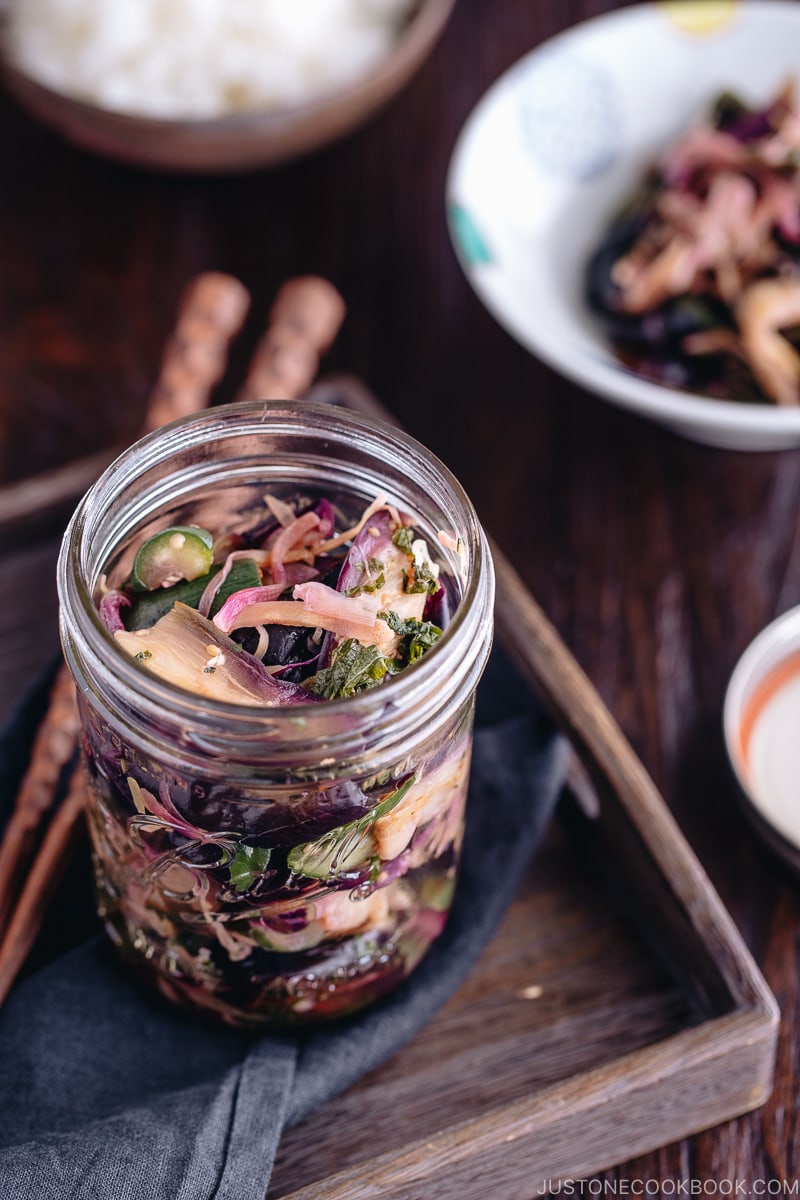
Shibazuke (柴漬け) is probably my favorite type of Japanese pickles. Until I tried making it from scratch, I wasn’t exactly sure what was in the pickle. Imagine my surprise when I found out it includes vegetables that I love – eggplant, shiso leaves, and myoga to name a few. The beautiful hues of purple and rosy pink of the vegetable medley truly capture the taste of nature, making this pickle extra special. If you have a thing for pickles, it’s hard not to fall in love with shibazuke.
Now before any pickle fans get too excited, I want to give you a heads-up. The ingredients for this recipe may not be easy to find even in your local Japanese grocery stores. I had trouble getting them as well.
However, let me introduce this delicious pickle to you anyway since you might have a chance to taste it when you visit Japan.
Table of Contents
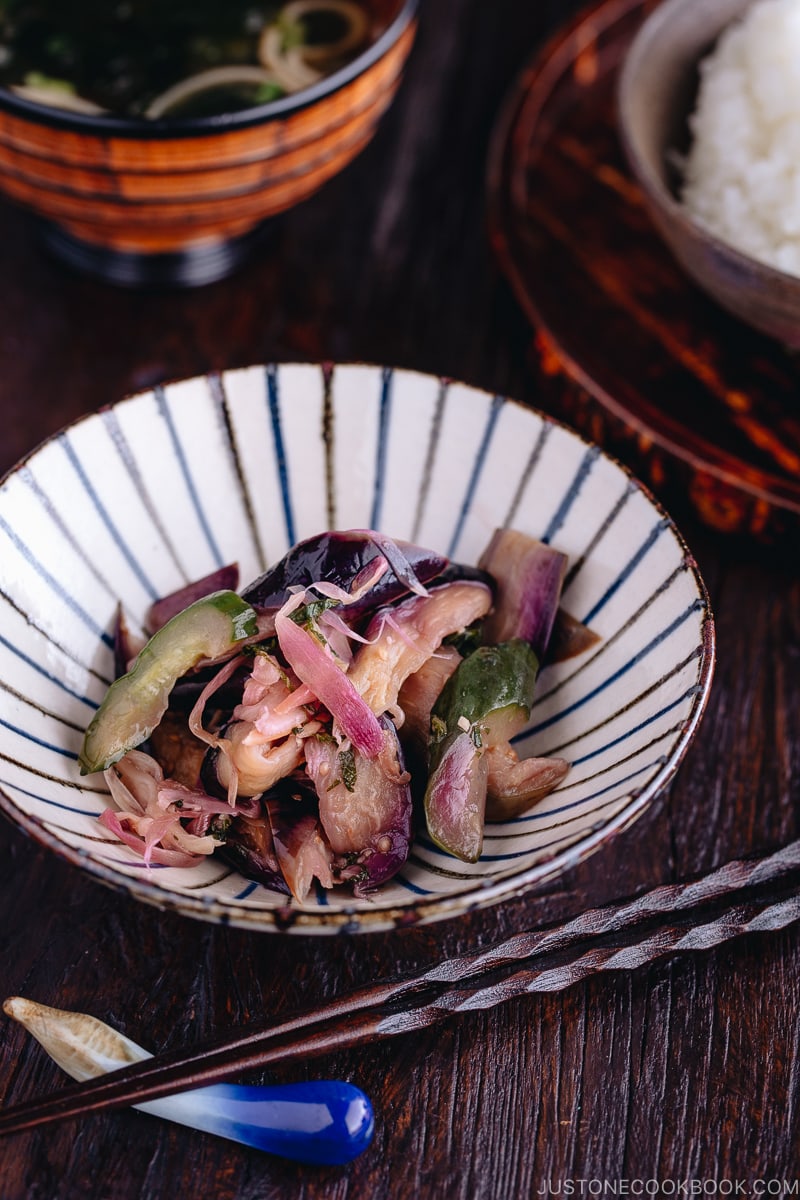
What is Shibazuke?
Shibazuke (柴漬け, originally 紫葉漬け) is one of the three main Kyoto pickles (京漬物) besides radish pickle Suguki (すぐき) and thinly-slice radish pickle Senmaizuke (千枚漬け).
This bright purple pickle is made of cucumber, eggplant, purple shiso (aka-jiso), ginger, and myoga, which are pickled in umezu (Japanese plum vinegar). The salty, slightly sour taste of shibazuke comes from salt pickling and lactic acid fermentation.
Although shibazuke is commonly served in Kyoto cuisine, they are enjoyed throughout Japan. This Fujikko’s “Shibazuke Tabetai!” TV commercial in 1985 made shibazuke really popular in Japan. Does anyone remember this TV commercial? I do!
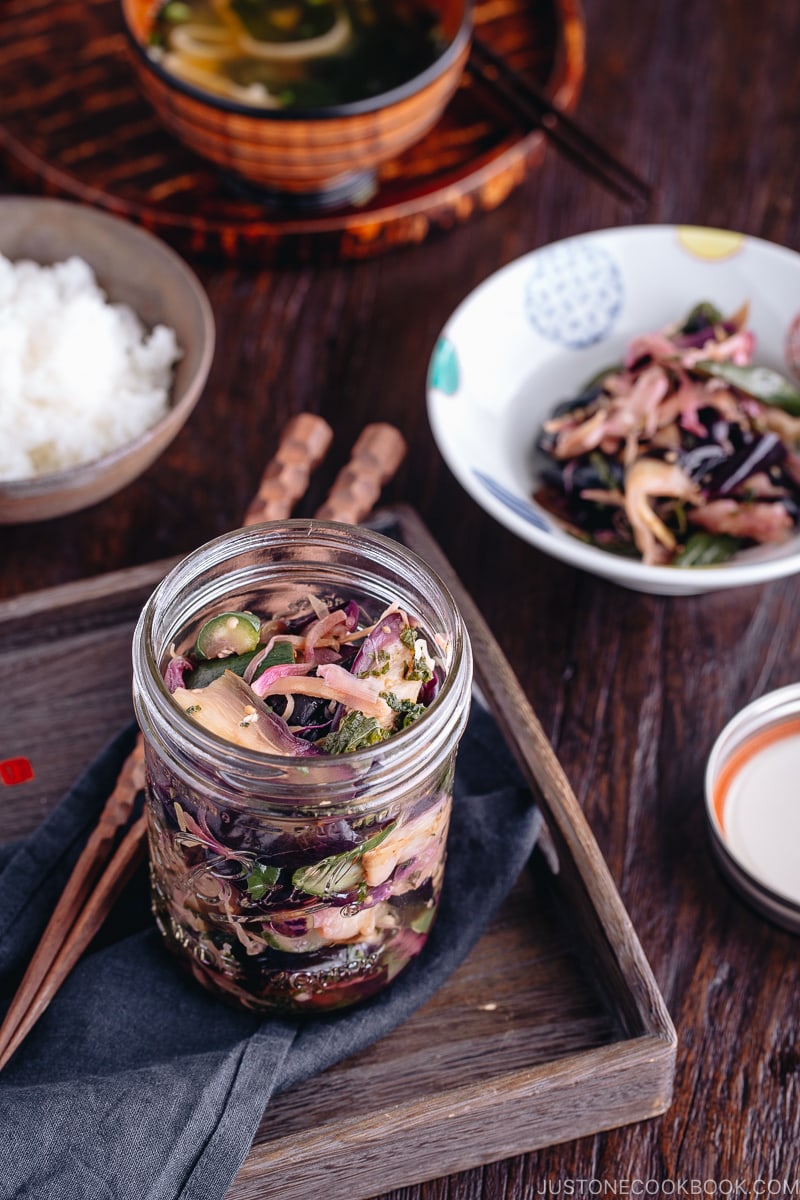
3 Unique Japanese Ingredients for Shibazuke
1. Aka Shiso (purple perilla leaves)
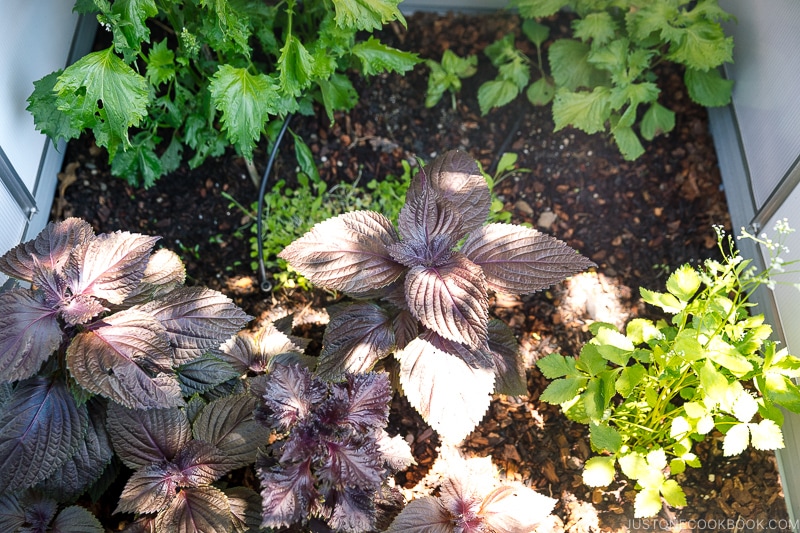
Ohara (大原), a suburb of Kyoto, has a good climate for growing shiso leaves. As Ohara is a basin, there is a drastic temperature difference between day and night, which results in high-quality fragrant shiso leaves. Therefore, Shibazuke made in Ohara uses a generous amount of purple shiso leaves (aka-jiso 赤紫蘇) without adding color additives.
When I was looking for ingredients to make shibazuke back in May in SF Bay Area, I couldn’t find purple shiso. Therefore, I had to use green shiso (ao-jiso 青紫蘇) instead. These two shiso leaves are slightly different in flavor but they make the closest substitute.
Purple red shiso is used for natural coloring to make umeboshi (Japanese pickled plum) and shibazuke, but not for eating as a herb. Green shiso leaves are commonly used for garnish, salad, toppings, and cooking as a herb.
If you have access to purple shiso, please see my Notes section in the recipe.
2. Myoga (Japanese ginger)
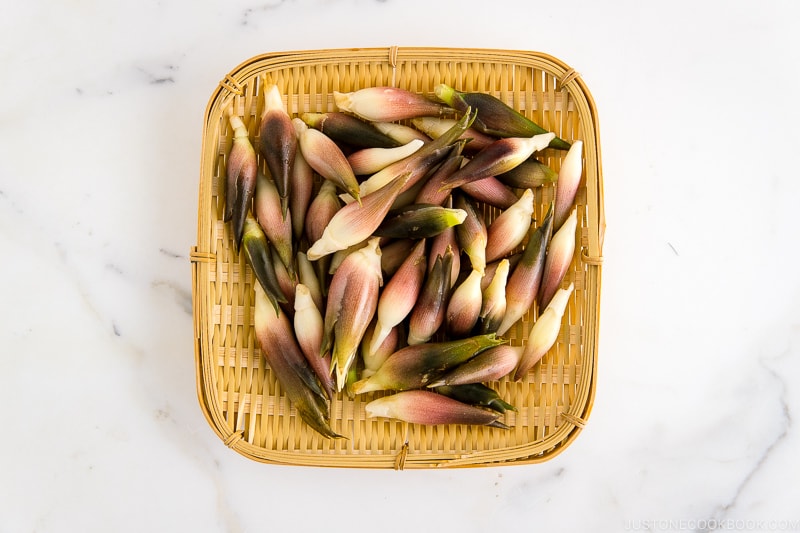
With a unique flavor and texture, this ginger bud is a wonderful aromatic. Myoga’s season is summer and it is served as a spice (yakumi 薬味) for cold somen noodles and Hiyayakko (chilled tofu).
I was lucky to find myoga before the summer comes, but one pack of 3 myoga costed me $8! I’m currently in Japan writing this post, and today I saw the exact same package of myoga which came from the same place for only 99 yen (about 90 cents)…
3. Umezu (Ume plum vinegar)
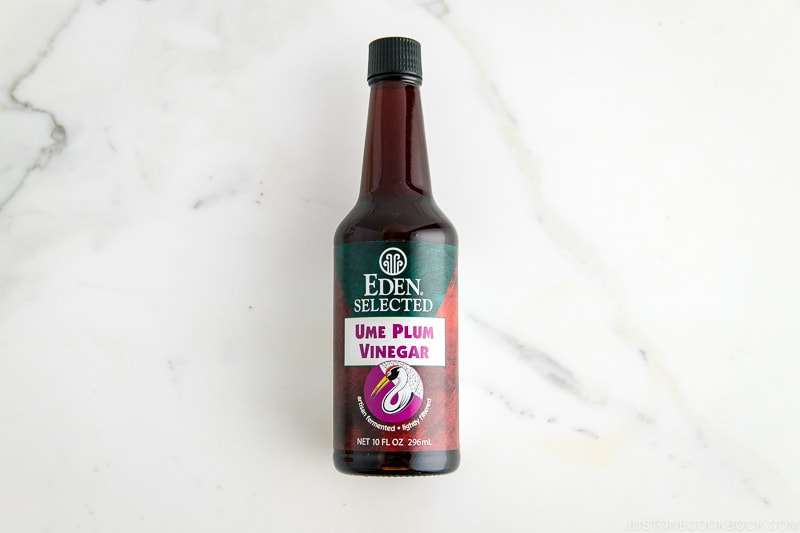
Umezu or Ume Plum Vinegar (赤梅酢) is the pickling brine from making umeboshi plums (Japanese pickled plums) with sea salt and purple shiso, that imparts its ruby red color. It’s a tart, salty, festive condiment with beneficial organic acids.
Since I didn’t have the purple shiso, I used umezu to make pickles and to add the purple color. This Eden brand has no artificial dyes, preservatives, or chemicals. You can find the umezu in Japanese grocery stores or on Amazon.
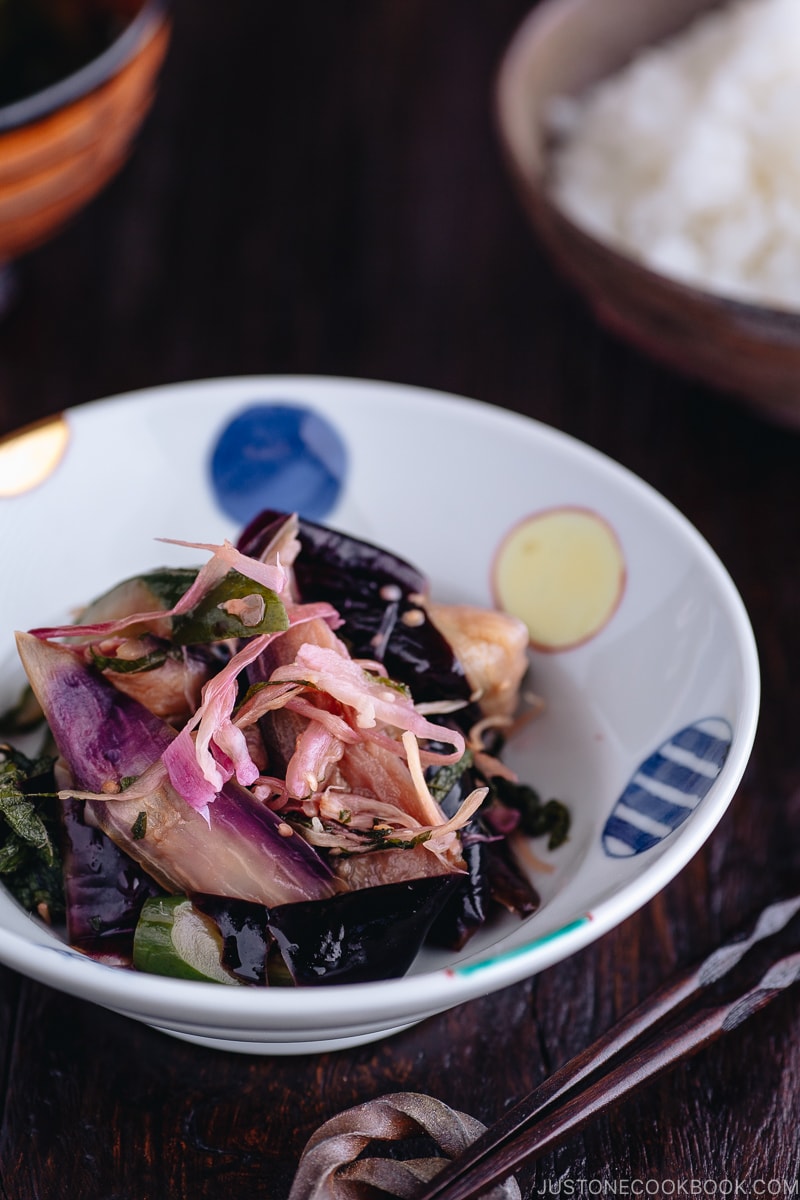
The Shibazuke Recipe
I’ve followed this Japanese recipe to make “quick” shibazuke. Instead of waiting for 3-7 day fermentation, this method can be done in a day or overnight. However, as another site that followed the same recipe also mentioned, the result was a bit too salty.
So I’d like to suggest: 1) reduce the salt from 2% to 1%, and/or 2) don’t leave with salt for half a day. I think 1 hour of pickling might be enough.
I’ve researched online to see if there is a better ratio or perfect timing for pickling, but other recipes are pretty much the same. So I’ll leave it up to you. When I try making it next time, I’ll definitely reduce the salt pickling time and test to see if 1-2 hours would work better.
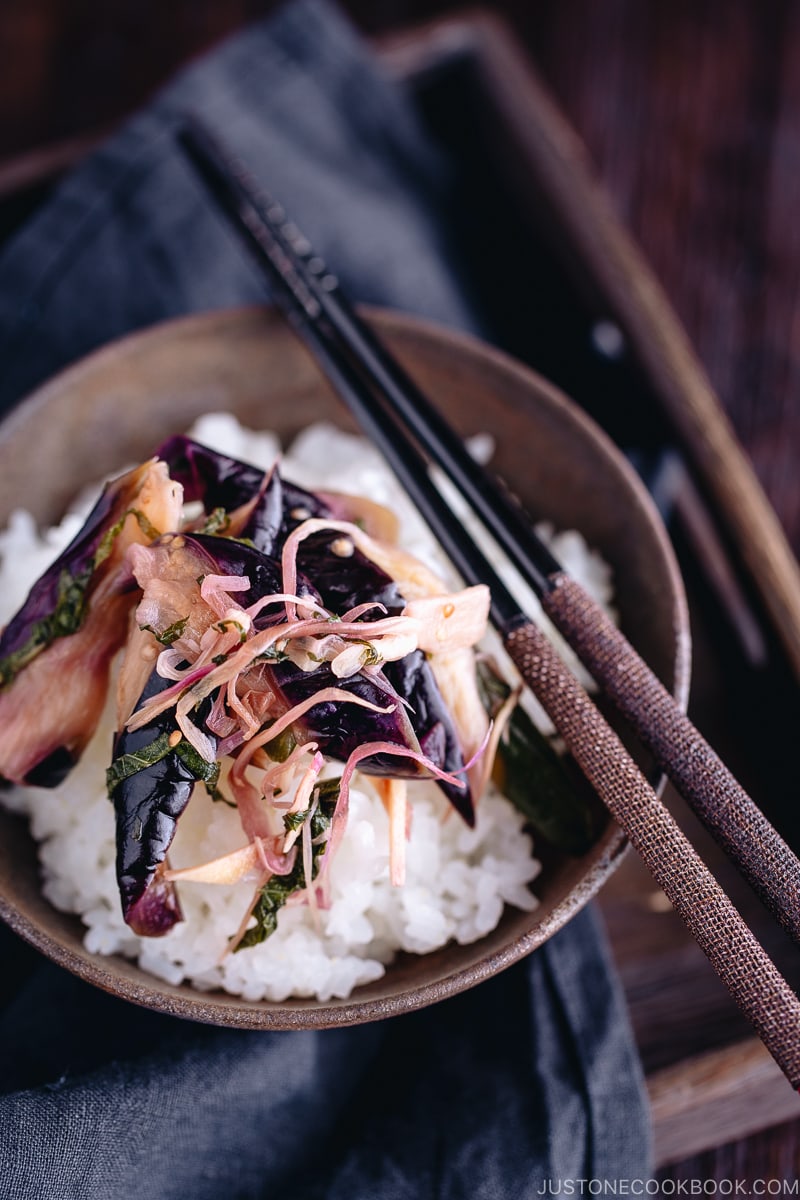
How To Enjoy Shibazuke
The best way to enjoy this pickle is to eat it with delicious steamed rice. I also enjoy eating this pickle with Ochazuke – steamed rice with tea poured over the rice. Shibazuke has a more intense savory flavor than other Japanese pickles. To me, the saltiness and sourness from the pickle add indescribable joy to a humble dish.
Even though my first batch turned out to be a little salty, I still enjoyed this refreshing pickle so much. There are no preservatives or additives. If you are lucky enough to find these unique Japanese ingredients, I hope you get to enjoy making the pickle with fresh summer ingredients.
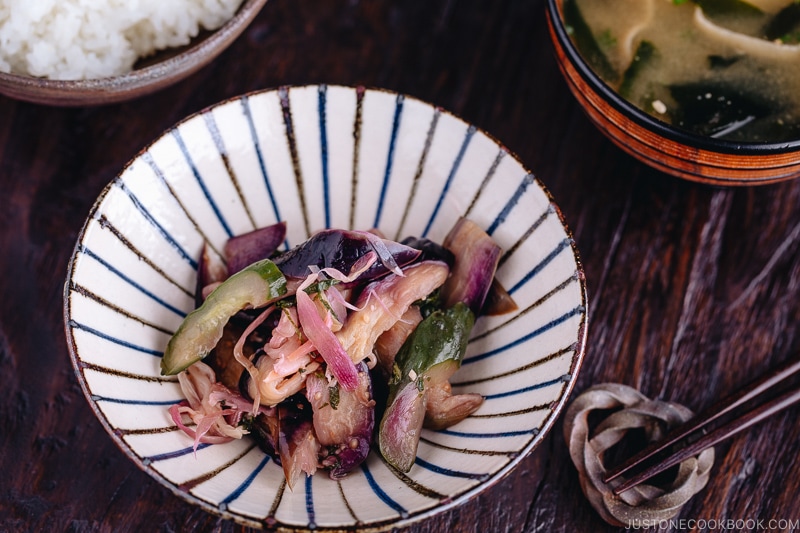
Wish to learn more about Japanese cooking? Sign up for our free newsletter to receive cooking tips & recipe updates! And stay in touch with me on Facebook, Pinterest, YouTube, and Instagram.
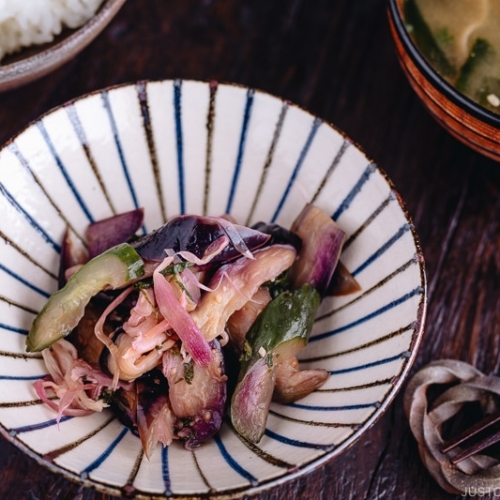
Shibazuke Pickles
Ingredients
- 3 Japanese or Chinese eggplant (14.1 oz, 400 g)
- 2 Japanese or Persian cucumbers (6 oz, 170 g)
- 3 myoga ginger (1.8 oz, 54 g; you can substitute it with a small amount of ginger, preferably mild-flavored young ginger)
- 1 inch ginger (0.8 oz, 22 g)
- Diamond Crystal kosher salt (0.4 oz, 11 g; 2% of total weight of vegetables)
For Pickling
- 20 shiso leaves (perilla/ooba)
- 4 Tbsp ume plum vinegar
- 1 Tbsp mirin
Instructions
- Gather all the ingredients. Wash the vegetables and weigh them. My vegetables weigh 573 g. Use salt equivalent to 2% of the vegetables’ total weight, which is 11 g for me.

- Cut 3 Japanese or Chinese eggplant in half lengthwise and slice diagonally.

- Soak the eggplants in water to prevent them from changing color.

- Cut the ends of 2 Japanese or Persian cucumbers and cut again in half lengthwise.

- Remove the seeds with a small spoon and slice diagonally.

- Cut 3 myoga ginger in half lengthwise and julienne.

- Peel the skin and julienne 1 inch ginger.

- Combine all the vegetables in a freezer bag and sprinkle with the measured Diamond Crystal kosher salt.

- Mix all together and knead the vegetables. Press the vegetables with twice the weight of the vegetables (roughly 1 kg). Leave at room temperature for 1 hour.

- Tightly squeeze the liquid out from the vegetables (you can first drain the vegetables into the strainer, too, if you‘d like) and discard the liquid. Transfer the squeezed vegetables back to the bag.

- Cut 20 shiso leaves (perilla/ooba) into julienne slices.

- Add the shiso leaves, 4 Tbsp ume plum vinegar, and 1 Tbsp mirin in the bag.

- Mix and knead the vegetables.

- Remove the air out of the bag and press with a heavy object. Keep in the refrigerator for 2–3 days and you can start eating it. Transfer to an airtight container or mason jar and consume within 2 weeks.

To Store
- Keep it refrigerated for 2 weeks.
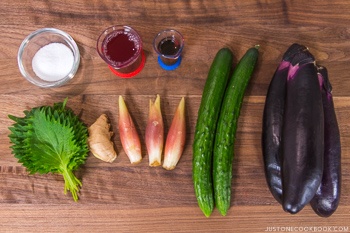
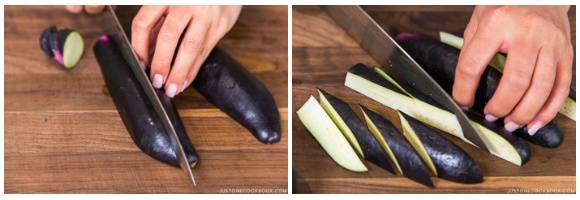
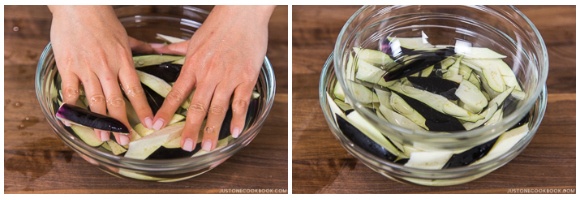
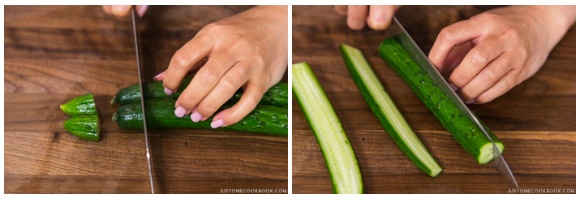
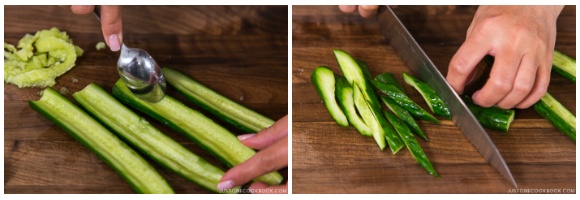
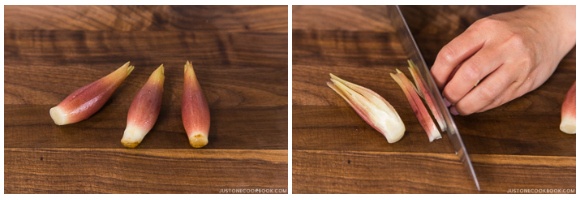
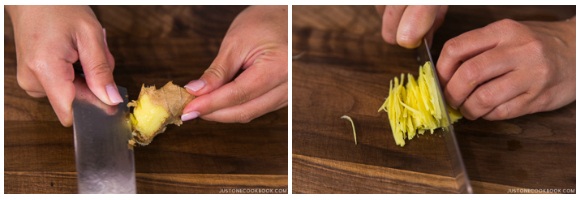
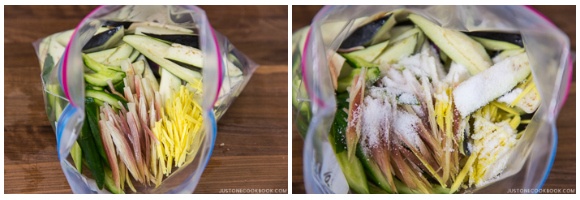
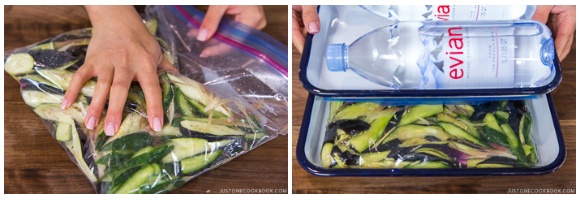
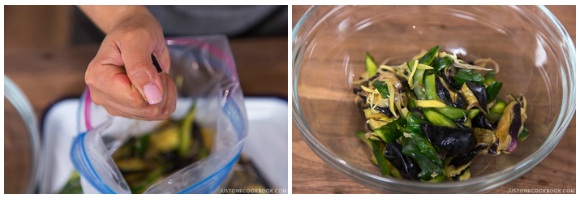
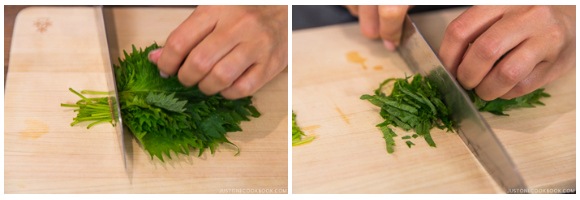
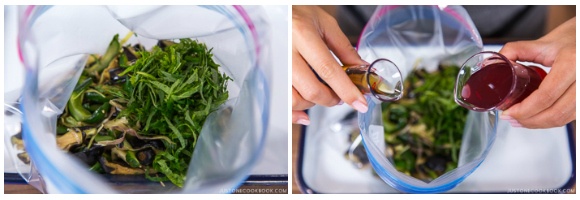
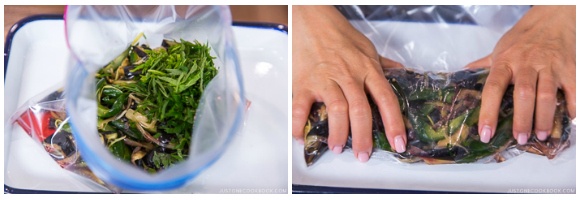
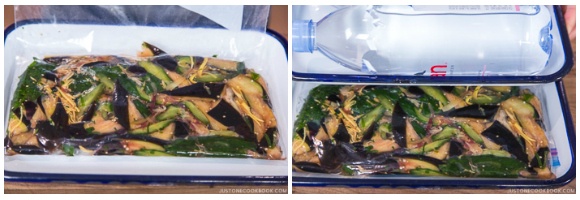
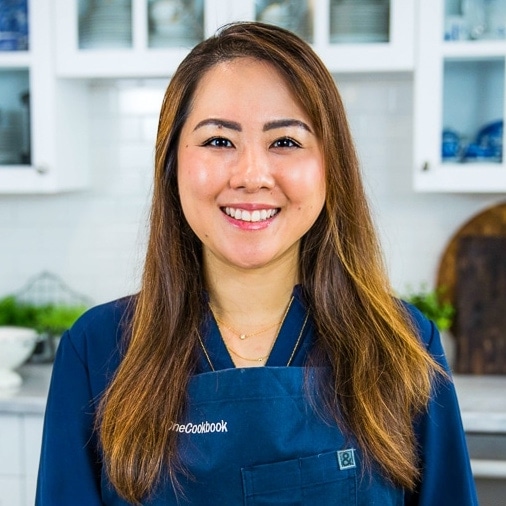
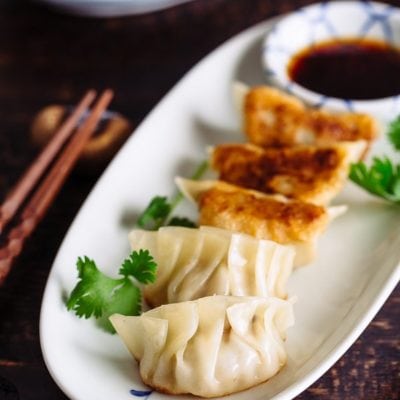
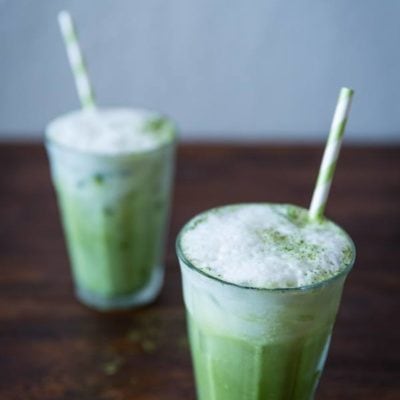

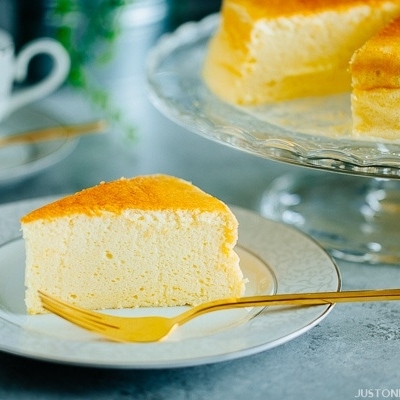
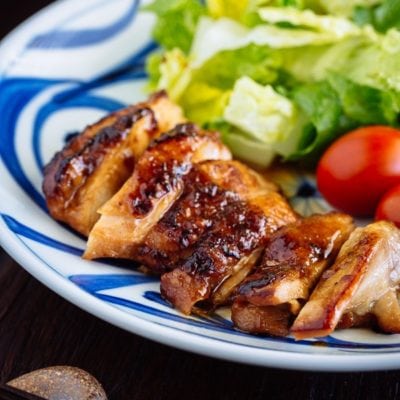
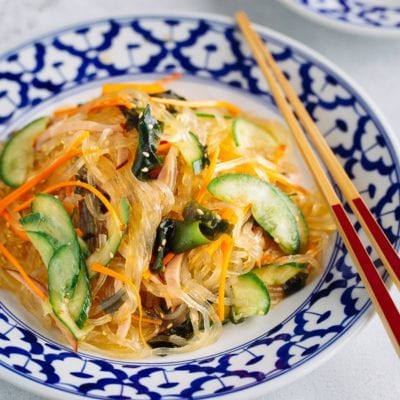
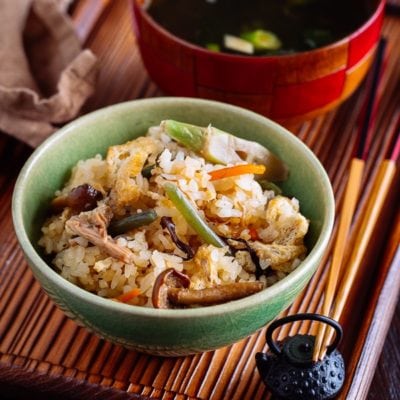
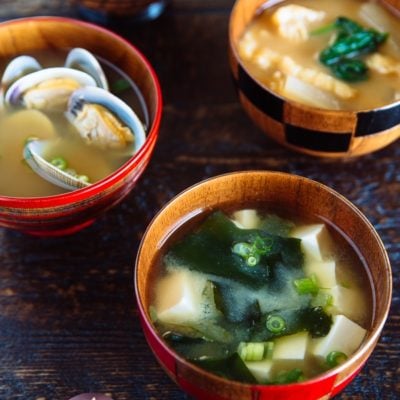

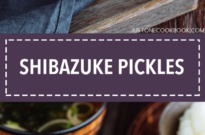
[…] Shibazuke Pickles (via Just One Cookbook) […]
[…] Shibazuke Pickles […]
[…] Shibazuke […]
I’m actually making these pickles now, with purple shiso- should the leaves be julienned, as you did with green shiso? You mentioned the purple shiso is not used for eating- does that mean the leaves should be removed from the pickles at some point?
Hi Sara! I apologize for my late response (just came back from Japan…).
You do not need to julienne the shiso. What I meant about not eating red purple shiso is that we do not decorate it like green shiso on sashimi or other use as a herb in recipes (like pasta etc). However, we do eat red purple shiso used in umeboshi or shibazuke. 🙂
Thank you for the reply, Nami. I made the pickles, and they turned out great! I love shibazuke, but often the packaged ones have added ingredients that I don’t like. Thank you for the recipe!
Hi Sara! AWESOME!!!! I’m so happy to hear you made this recipe! Thank you for your kind feedback as well! xoxo
Hi, what can you substitute with myoga?
Thank you!
Hi Cara! Unfortunately, this is very unique and I can’t find something that can be a good substitute. 🙁 I think about other options, but they are just not the same and not good alternative… Sorry…
Hi Namiko-san, can I please check if myoga and ginger flower the same thing?
Hi Leng! First time hearing ginger flower. I googled, and found this article:
https://www.gardeningknowhow.com/edible/herbs/ginger/japanese-ginger-information.htm
Thanks so much for this article Namiko-san! They sure look very similar to Ginger Flower / Torch Ginger that’s available here in Singapore
http://blog.seasonwithspice.com/2011/09/what-is-torch-ginger-flower.html
I wonder if I could use them in replacement of Myoga (if I can’t find them at Japanese supermarket)
Hi Leng! Hmm they are different. I don’t know how the taste is like for torch ginger, but I assume they are quite different things… I know Myoga is hard to find… 🙁
Thanks for your honest opinion Namiko-san! I appreciate it. Yes, I agree that they are different and since I haven’t taste myoga it’s better I keep to the recipe suggestions here 🙂
Hi, here Myoga is really really expensive and hard to get. Maybe I can take it away and take only ginger? Have I to adjust the amount of ginger than? Thank you for help 🙂 I want to make the recipe the full way not the quick one ^^
Hi Katrin! I know, myoga is expensive here too. You can increase ginger a tiny bit more but not to replace the entire myoga amount, in a way. Hope you enjoy!
I had to leave out the myoga and the shiso leaves, as I can’t find them in any Asian market where I live. I was able to find the ume plum vinegar and also bought some ume plums that had red shiso leave in with the plums. I added some of those shiso leaves along with a few plums to the pickle mixture. It turned out really well. I would love to try to recipe as written, but that would require me to develop my nonexistent gardening skills, so probably won’t happen. Thank you for the recipe. I really enjoyed it despite the adaptations I had to make.
Hi Cathy! Wow, your feedback was so inspiring! I understand about non-existent gardening skills as it’s same for me, and I’m glad you made it all worked out well! Thank you for writing, and I’m sure others will appreciate your feedback too! xo
Hello Nami – I love your website and have just begun using some of your recipes. I love Japanese pickles and would like to try this one but I wonder if you could suggest an alternative to eggplant? I already use Eden ume vinegar and I have a great Japanese market near where I live.
Thank you..
Morna
Hi Morna! Thank you so much for reading my site! Hmm… you can skip eggplant. They work great with this combination, but I can’t think of a good replacement that works for this… like texture wise. Can you just skip it, using more cucumbers?
I have developed an allergy to eggplant (s0 sad) and as much as I love cucumbers, I think I’ll try some radish which is a completely different texture from eggplant but I do love the crunch from daikon. Just going to raid my Dad’s garden for the aka-jiso!
Hi Rumi! Sorry to hear about your allergy. I also have some tingling feelings on my tongue when I eat eggplant and tomatoes… this started when I became adult, so I can’t eat too much either. You’re lucky to have akajiso from your dad’s garden. 🙂
Hello Nami
I have so much purple shiso in my garden this year that I didn’t know what to do with. Perhaps I can use them in this recipe. Thanks for this timely post.
Hi Ling! Wow I’m jealous! Hope you enjoy this recipe!
Konnichiwa, Nami San! Thank you for sharing your recipes. I am making my own pickled ginger now, and using lots of other recipes and ideas. I am also learning Japanese via an app on my android phone. I am not very good yet! I love the sound of languages being spoken and want to learn more. I love the taste of foods from Asian region, but Japan is my favorite. I love to drink Matcha tea, and have made a small Japanese Tea Ceremony at the “60 and Better Club” which is a group of local people aged 60 and over (up to age 99 years!) who meet weekly. I am a “junior” member at age 56, and I do baking and help out with crafts and crochet. We love some of your recipes and want to say arigato! Best wishes, Gay
Hi Gay! How wonderful that you’re learning new language and trying new recipes! Thank you for introducing Japanese tea ceremony at the club too! I’m inspired by hearing your story!
Hope to make and try these pickles…The Japanese site sirogohan.com has loads of interesting recipes hope you will recreate some of this recipes with your add touch..
Hi EJ! I agree, he has lots of great recipes and good instructions. Too bad they are written in Japanese only.
Hi Nami,
Yes he needs a Francis like the you tube “Cooking with Dog”..
I hope this isn’t rude, but may I suggest an English change? The Japanese word “momu” is often translated “massage” as you did, but with food it is translated “knead” (sounds like “need” as in the case of kneading bread dough).
Hi Christina! Thank you for your suggestion! I was thinking of “massaged kale” recipe and used the same word for this recipe, but now I know we can use knead for vegetables besides kneading dough. I’ve fixed the recipe. Thank you!
if any boston area followers want some, i have PLENTY of aka shiso in my gardens, 15 min. north of boston in winchester mindyarbo@comcast.net
i think you are a terrifically talented chef. a japnese friend uses the seeds of the akashiso,after it flowers, in salads etc. do you?
Hi Mindy! You’re so kind. Thank you for sharing your email with my blog readers. How nice you grow your own. I hope to grow Japanese vegetables one day when my kids are much older and I have more time…
Thank you for your kind comment. I had never used seeds before. 🙂
Nami, thank you for these recipes. Shiso is very easy to grow! IN fact, once you have it, you never have to plant it again if you let the plants set seed and might be out in your yard pulling the extra plants. I also have myoga in my yard, as did my mother in New Jersey. You can buy dormant roots on Amazon, titled Myoga Seeds. If you choose to do so, I strongly suggest waiting to order in March, as dormant roots are sent. These would take more care and require a soil that has constant moisture.
Hi Sheila! Yes, I heard and know how easy it is to grow shiso. And I truly wish to have homegrown shiso garden. However, where we live is probably not meant for plants grow (we have wild animals come to our yard, including deer!) and we live in the pretty harsh windy neighborhood. No houses around here have healthy plants in their gardens besides bushes, shrubs, and cactus! I have fake grass in our backyard. I can only dream!
I love shibazuke. I’m not a fan of myoga & didn’t realize it was an ingredient. I haven’t seen the red shiso leaves in the market either. I’ll have to give this recipe a shot. Thank you for sharing!
Hi Helene! Maybe not every single shibazuke recipe include myoga but it’s very commonly used. Hope you enjoy making your shibazuke. 🙂